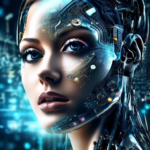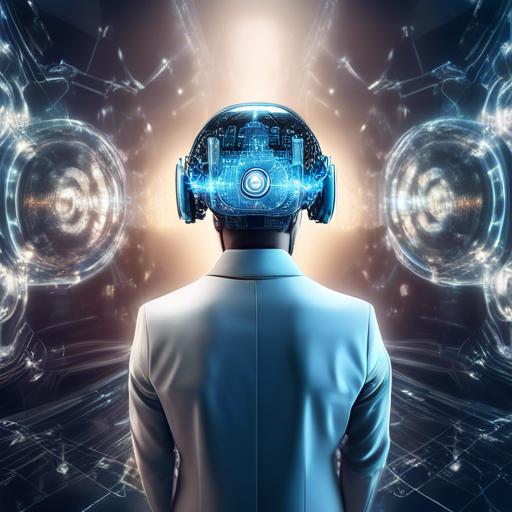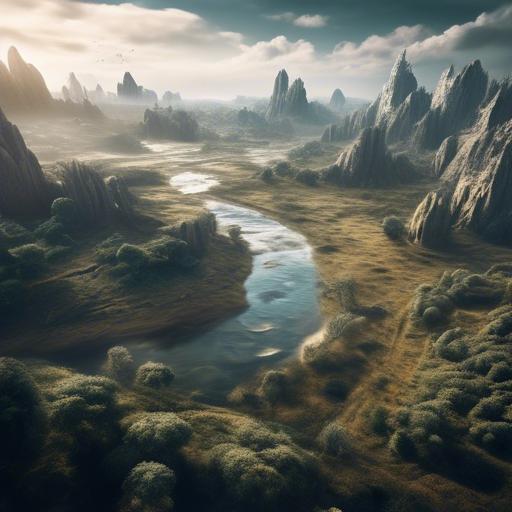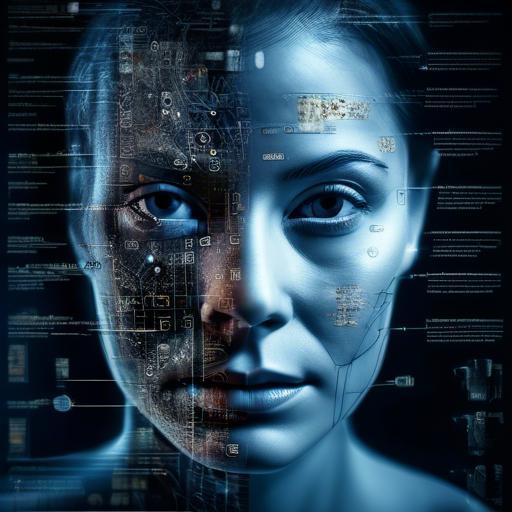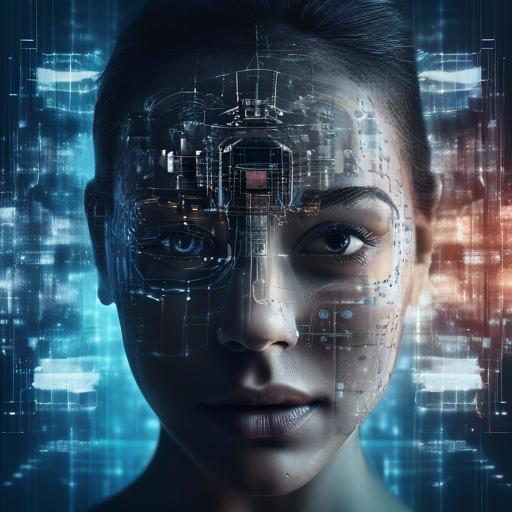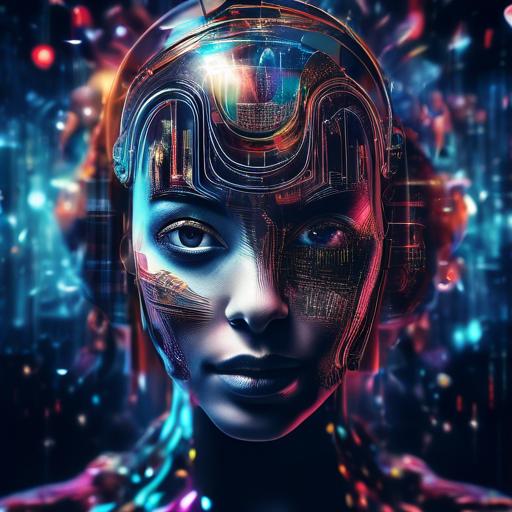In the realm of imagination where ink meets dreams and still images freeze moments in time, there’s a new maestro on the horizon, poised to transform static artistry into dynamic storytelling. Imagine a world where a single, breathtaking illustration—be it a lone warrior poised for battle, a serene landscape basking in twilight glory, or even a whimsical creature dancing on the edge of a painter’s whim—suddenly bursts into life, not through the animator’s painstaking frame-by-frame labor, but through the alchemy of Artificial Intelligence. Welcome to the dawn of a groundbreaking synthesis, where technology whispers motion into the ears of silence, bridging the gap between what is seen and what is felt. In this exploration of AI in animation, we delve into the revolutionary capability of generating motion from still images, a journey where every pixel tells a story anew and every frame harbors the potential for infinite tales. Embrace the future, where creativity knows no bounds and the line between the static and the dynamic is blurred by the artistry of artificial intelligence.
Table of Contents
- A New Dawn: Revolutionizing Animation Through AI
- From Pixels to Motion: The Magic Behind AI Algorithms
- Breathing Life into Stills: A Step-by-Step Guide
- Harnessing the Power of Neural Networks in Animation
- Best Practices for Seamless Motion Generation
- Balancing Creativity and Technology: Tips for Animators
- Ethical Considerations in AI-Driven Animation
- Future Trends: The Next Frontier in Animation Technology
- Closing Remarks
A New Dawn: Revolutionizing Animation Through AI
Imagine breathing life into a still image, with every strand of hair blowing in the wind and every nuanced expression changing fluidly. This may sound like something out of a sci-fi movie, but thanks to advances in artificial intelligence, it is rapidly becoming a reality. AI is ushering in a new era where even the simplest sketches can evolve into dynamic moving pictures. This breakthrough is not just transforming the fields of art and entertainment, but opening up limitless possibilities for education, marketing, and beyond.
One of the most fascinating aspects of this technological leap is how AI algorithms analyze and understand the elements within a still image. Through intricate neural networks, AI can determine spatial relationships, predict motion paths, and simulate naturalistic movement. Artists can now animate their creations without needing extensive knowledge in traditional animation techniques. All it takes is a single picture, and with the help of AI, that image can transform into an engaging, kinetic piece.
Integrating AI into animation isn’t just about convenience; it is also a tool for democratization. **Budgets and time constraints** that once hindered creative projects are no longer insurmountable barriers. **Aspiring animators** and small studios can produce high-quality animations that rival major studios. Consider the following benefits:
- **Cost-Effective**: Reduce the need for extensive animation teams.
- **Time Saving**: Produce animations faster, from concept to completion.
- **Scalability**: Work on multiple projects simultaneously.
| Traditional Animation | AI-Driven Animation |
|---|---|
| Manual Frame-by-Frame | Automated Motion Generation |
| Time-Consuming | Rapid Production |
| Costly | Budget-Friendly |
As exciting as these advancements are, it is important to embrace them thoughtfully. While the influx of AI tools is making animation more accessible, it should not replace the irreplaceable human touch that breathes soul into art. Instead, AI should be viewed as a powerful ally that amplifies the animator’s vision, **complementing artistic innovation** rather than overshadowing it. With the right balance, AI can drive a creative renaissance, where the fusion of technology and artistry leads to **captivating storytelling** unlike anything we’ve seen before.
From Pixels to Motion: The Magic Behind AI Algorithms
Imagine a world where your favourite still photography turns into a mesmerizing animation. That’s precisely what AI algorithms are capable of today—transforming static pixels into fluid motion. The process involves a sophisticated blend of computer vision, deep learning, and pattern recognition techniques to bring life to still images.
At its core, the technology employs convolutional neural networks (**CNNs**) trained on extensive datasets of motion sequences. These networks are adept at understanding and predicting how different elements within an image would move naturally. **Key components** include:
– **Object Detection:** Identifying and isolating different objects within the image.
– **Pattern Recognition:** Understanding textures and shapes to predict their natural movement.
- **Temporal Dynamics:** Simulating how objects interact and transition over time.
Leveraging these techniques, AI algorithms transform images into captivating animations by generating intermediate frames that showcase seamless transitions. Consider a simple example of animating a photograph of a person walking. The AI constructs the possible subsequent frames by predicting various body part movements and synchronizing them to create a fluid walk cycle.
| Step | AI Task |
|---|---|
| 1 | Image Analysis |
| 2 | Object Segmentation |
| 3 | Motion Prediction |
| 4 | Frame Generation |
| 5 | Sequence Rendering |
One of the striking advantages of using AI for animation is its ability to learn from various styles. Whether it’s a cartoonish flair or a hyper-realistic movement, algorithms can adapt and refine animations, reflecting meticulous details like the subtle sway of hair or the ripple of fabric in a breeze. The result? Gratuitously detailed and emotionally resonant animations that captivate audiences.
Additionally, AI isn’t limited to realistic movements. It also opens up new realms of artistic possibilities, allowing animators to experiment with exaggerated or fantastical motion that would be challenging to animate by hand. This possibility extends creative potential far beyond traditional methods, making the art of animation not only more efficient but also boundlessly imaginative.
Breathing Life into Stills: A Step-by-Step Guide
Imagine taking a single static image and transforming it into an animated masterpiece. This transformative leap is now possible thanks to cutting-edge AI technologies that can breathe life into stills. By learning the nuances of artificial neural networks, anyone can master the creation of mesmerizing motion from static photos. Here’s a step-by-step guide to help you navigate this fascinating process.
- Choose the Right Tools: Select AI-powered tools adept at motion generation. **DeepArt** and **Daz3D** are popular choices. Choose a platform that suits your skill level and provides community tutorials for additional learning support.
- Upload High-Quality Images: The better the image quality, the more vibrant and detailed your animation will be. Ensure your still image is crisp and free from distortions.
- Define Movement Pathways: This step involves specifying movement algorithms in the software. Crucial factors include the flow direction, speed, and the specific parts of the image that will move.
- Apply Filters and Tweaks: Enhance the animated output with filters, lighting adjustments, and other fine-tuning options available within the AI tool.
AI tools often provide various customization features. Here’s a quick comparison of some popular options:
| Tool | Best For | Community Support |
|---|---|---|
| DeepArt | Artistic Effects | Extensive |
| Daz3D | 3D Animation | Medium |
| Plotagraph+ | Subtle Movements | Growing |
One of the rewarding aspects of using AI for animation is the instant feedback loop. As you adjust parameters and paths, the AI updates your animation in real-time, allowing for swift iterations. This interactive process not only saves time but also opens up opportunities for experimentation with different styles and effects.
With patience and practice, the realm of AI-animated stills can become your creative playground. Embrace the limitless possibilities, and start transforming your photos into dynamic visual stories today!
Harnessing the Power of Neural Networks in Animation
With the advent of neural networks, the landscape of animation has seen a transformative shift. Leveraging the capabilities of artificial intelligence, animators can now breathe life into still images in ways previously considered unimaginable. Neural networks, through complex algorithms, analyze static visuals and predict subsequent frames, generating fluid motion that mimics natural movements.
- Deep Learning: Employing deep learning techniques, these networks have the capability to understand and reproduce movement patterns, from the subtle swaying of leaves to intense action sequences.
- Time-Efficiency: Traditional animation, requiring painstaking frame-by-frame creation, can now harness AI to accelerate production timelines.
- Cost-Effective: Reducing the need for extensive manpower, neural networks enable studios to allocate resources more effectively.
| Feature | Traditional Animation | AI-Assisted Animation |
|---|---|---|
| Development Time | High | Low |
| Cost | Expensive | Cost-Effective |
| Manual Labor | Intensive | Minimal |
The precision of neural networks also allows animators to experiment with a variety of styles and effects. Whether it’s transforming a simple pencil sketch into a detailed, dynamic scene or converting a photograph into a vivid animated sequence, AI provides unparalleled flexibility. For instance, animators can adjust parameters to achieve different textures, lighting conditions, and perspectives, further enriching the storytelling process.
Furthermore, the compatibility of neural networks with existing animation tools and software ensures seamless integration into current workflows. This synergy enables animators to harness both artistic expertise and technological innovation, pushing the boundaries of what’s creatively possible. Essentially, the fusion of AI with traditional animation techniques empowers artists, amplifying their creative potential and enabling the creation of visually stunning and emotionally resonant animations.
Best Practices for Seamless Motion Generation
When diving into the world of AI-driven animation, it’s crucial to embrace certain best practices to ensure the generated motion is as seamless as possible. Here are some strategies to guide you:
- High-Quality Source Images: The fidelity of your source images greatly impacts the final output. Ensure the still images are of high resolution and clarity. This allows AI algorithms to interpolate motion with greater precision and detail.
- Consistent Lighting and Angles: Consistency in the lighting and angles across the input images helps AI systems maintain coherence in motion. Varied lighting can introduce unwanted shadows and artifacts.
- Utilize Pre-trained Models: Leveraging pre-trained models that have been fine-tuned on large datasets can save time and increase the quality of motion generated. These models often come with built-in optimizations that can handle complex animations more effectively.
In addition to these basic guidelines, it’s helpful to understand how different AI tools stack up against each other. Here’s a comparison of some popular AI motion generation tools:
| Tool | Key Feature | Best For |
|---|---|---|
| DeepMotion | AI-Powered 3D Animation | High-detail 3D character animations |
| PixaMotion | Versatile Motion Effects | Creating dynamic backgrounds and effects |
| D-ID Creative Reality | Realistic Human Motion | Animating facial expressions and lip-syncs |
Iterative Refinement: Don’t settle for the first output. Often, the first pass of motion generation will need adjustments. Use feedback loops to refine the animation incrementally. This might involve tweaking parameters, adjusting the temporal coherence, or even re-training parts of the model with more specific data.
Lastly, always remember to test your animations in real-world scenarios. What looks good in a controlled environment might not hold up under different conditions. Rigorous testing ensures your animations are robust, versatile, and meet the desired quality standards.
Balancing Creativity and Technology: Tips for Animators
The delicate dance between innovative ideas and cutting-edge technology defines the animator’s journey. One emerging tool that encapsulates this balance is AI’s ability to generate motion from static images. Whether you’re sketching a character frozen mid-air or a scenic landscape, leveraging AI can breathe life into these stills, elevating your creative process.
- Experiment with AI Tools: Adopt AI-based software like DAIN or EBSynth, which use deep learning algorithms to interpolate motion between frames. Don’t hesitate to explore various settings and tweak parameters.
- Storytelling Focus: Ensure that the motion generated aligns with your narrative. AI might provide technical prowess, but the heart of the story remains within your creative vision.
- Refinement and Touch-ups: While AI can automate much of the motion generation, fine-tuning the output manually can add a personal touch that technology alone cannot replicate.
Balancing the two elements can amplify the richness of your animated work. Let’s consider a few key points that might help streamline your workflow:
| Technique | Benefit | Consideration |
|---|---|---|
| Layer Blending | Seamlessly integrates AI-generated frames | May require color correction |
| Curve Adjustment | Smoothens transition between key frames | Can be time-consuming |
Utilize these techniques to enhance the synergy between creativity and technology. Adjusting curves for smoother transitions, or blending layers to finesse AI-generated frames into the larger animation, can significantly improve the final product.
- Collaborative Innovations: Use AI as a collaborative partner rather than a tool. By doing so, you can harness its capabilities to complement your unique style.
- Continuous Learning: Stay updated with the latest advancements in AI technology. Joining forums and communities can provide insights into new techniques and software updates.
Remember, the essence of animation lies in storytelling, emotion, and creativity. Tools like AI are there to support and enhance your artistic endeavors, allowing you to focus on the core aspects of your craft.
Ethical Considerations in AI-Driven Animation
In the realm of AI-driven animation, it’s paramount to address several ethical concerns to ensure technology serves humanity responsibly. One of the foremost issues is **consent**. Artists and animators must obtain proper consent before using someone’s likeness or any intellectual property in AI-generated animations. Failure to do so can lead to legal troubles and ethical misconduct.
Another significant consideration is **authenticity**. AI-generated animations, while often visually stunning, may misrepresent the original intent of a piece of art or cultural artifact. Ensuring the integrity and authenticity of the final animation is crucial. Artists might find themselves in a dilemma between artistic augmentation and ensuring true representation of source materials.
**Bias and representation** are also central ethical concerns. AI systems can inadvertently perpetuate existing biases found in the training data. This can lead to animations that misrepresent certain groups or reinforce negative stereotypes. To mitigate these effects, diverse datasets and inclusive algorithms need to be prioritized, ensuring fair representation of all communities.
- **Transparency**: Clearly inform audiences about the use of AI in animation production.
- **Accountability**: Establish strict guidelines and responsibilities for those using AI in creative processes.
- **Privacy**: Safeguard personal data used in AI systems to generate animations.
Implementing these ethical principles can be complex, but a foundational step would be the adherence to established guidelines and the formation of **ethics committees** within organizations. These committees should oversee the deployment of AI technologies in creative processes to ensure every step abides by ethical norms.
| Ethical Concern | Action Item |
|---|---|
| Consent | Obtain proper permissions and licenses. |
| Bias | Use diverse and inclusive datasets. |
| Transparency | Inform audiences about AI usage. |
while AI offers unparalleled opportunities for innovation in animation, addressing the ethical considerations is essential for sustainable and responsible growth. Through thoughtful application and vigilant oversight, AI can transform the art of animation ethically and inclusively.
Future Trends: The Next Frontier in Animation Technology
The realm of animation is continually evolving, with technology pushing the boundaries of what we once thought possible. One of the most exciting advancements is the use of Artificial Intelligence (AI) to generate motion from still images, forever transforming the landscape of animation production. By leveraging machine learning algorithms, AI can analyze a static image and predict its dynamic movement, allowing creators to breathe life into characters and scenes with unprecedented ease.
Imagine being able to take a single frame of an artwork and effortlessly generating realistic motion sequences. This capability not only accelerates production time but also opens the door to creative possibilities that were previously unimaginable. **Key features of this AI-driven technology** include:
- Speed: Rapid generation of animation sequences from static images.
- Consistency: Maintaining uniformity in the motion patterns, minimizing errors.
- Cost-effectiveness: Reducing the need for extensive manual labor, cutting down production costs.
Additionally, AI’s role in animation encompasses various revolutionary tools that enhance the creation process. For instance, **motion interpolation** techniques allow AI systems to create intermediate frames between two key frames, generating smooth and natural-looking animations.
| Technique | Benefits |
|---|---|
| Motion Interpolation | Smoother transition and enhanced realism |
| Image-to-Motion Synthesis | Faster production and innovative creativity |
Moreover, these technologies are becoming accessible to a broader audience. You no longer need a highly specialized team to create professional-grade animations. With AI tools becoming more user-friendly, both seasoned professionals and hobbyists can explore this **new frontier** with equal enthusiasm. Consequently, this democratization of animation technology promises a vibrant future where all storytellers have the tools to bring their visions to life.
Closing Remarks
As we continue to witness the amazing advancements in artificial intelligence and animation, the fusion of the two worlds is nothing short of magical. Through the power of AI, we are able to bring life and movement to still images in ways we never thought possible. The potential for creativity and innovation in the field of animation has expanded exponentially, opening up endless possibilities for storytellers and artists alike. So let us embrace this exciting new era of AI in animation, and let our imagination soar to new heights as we watch our visions come to life before our very eyes. The future is bright, the future is animated!









